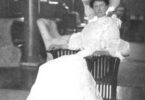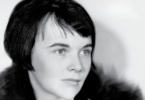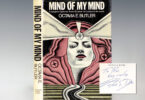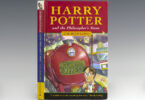“There is no order in the world around us, we must adapt ourselves to the requirements of chaos instead.”
― Kurt Vonnegut, Breakfast of Champions
Kurt Vonnegut’s life and writing career encompass many pivotal events in 20th-century America. He grew up during the Great Depression and saw his family grapple with losing their ‘American Dream.’ His first-hand experiences with the horrors of World War II made him part of the Greatest Generation. He went on to be an influential part of the 1960s and 1970s counter-cultural revolution. His works are important time capsules and glimpses into who we are and warnings of what we can become.

Kurt Vonnegut was born on November 11, 1922, in Indianapolis, Indiana. His mother’s side of the family had owned a prosperous brewery until it was shut down by Prohibition in 1920. After that, the Great Depression took clients from his father’s architectural business. Although his older siblings were educated at private schools, Vonnegut had to attend public school because of the family’s declining fortunes. They were still well-off enough to have a cook and housekeeper, Ida Young, whom Vonnegut credits as having a positive and lasting effect on his life. With his decline of business, his father became withdrawn and his mother became bitter. She attempted to pursue a career as a writer but had no success in placing her stories.
After graduating from high school in 1940, Vonnegut attended Cornell University, majoring in biochemistry at the urging of his father and brother. He had little interest in his studies but joined the school newspaper as a writer, then editor. His poor grades and a controversial pacifist article entitled “Well All Right” got him kicked out of the ROTC program. After being placed on academic probation, he left school and joined the Army in January 1943.
During his Army training, he was stationed in Indianapolis. On Mother’s Day weekend in 1944, he returned home to find his mother had committed suicide by overdosing on sleeping pills.
“But she did look back, and I love her for that, because it was so human. So she was turned to a pillar of salt. So it goes. People aren’t supposed to look back. I’m certainly not going to do it anymore.”
― Kurt Vonnegut, Slaughterhouse-Five
A few months later during World War II, Vonnegut was taken prisoner in the Battle of the Bulge and sent to Dresden to work in a factory. During the Allied bombing of the city, he survived by hiding in a meat locker. Afterward, he was sent into the city to collect and burn corpses. Vonnegut denied this experience having a lasting effect on him, but it shows up in his later work, most notably his pivotal novel Slaughterhouse-Five. In 1945, Vonnegut got frostbite and was released from the Army. He was awarded a Purple Heart for his service.
After WWII he attended the University of Chicago from 1945 to 1947 for his master’s in Anthropology but dropped out after his thesis, which compared Cubist painters to Native American artists, was rejected. Decades later in 1971, the University awarded him his master’s, accepting his novel, Cat’s Cradle (1963), as his thesis.
Vonnegut met his first wife, Jane Marie Cox, in kindergarten. They dated in high school until he left for college, and then married in 1945 after he returned from the War. They had three biological children.
From 1947-1950 Vonnegut worked as a publicist for General Electric in New York, which got him close to scientists and engineers. This experience greatly informed his writing, including his debut novel, Player Piano. The satirical take on a future world that is run by machines was published in 1952.
In 1958 his sister died of breast cancer the day after her husband was killed in the Newark Bay rail accident where a commuter train slid off the rails into the Bay. Vonnegut adopted three of her four sons, and with six children, he was prompted to gain even greater success as a writer to support his family. His subsequent novels The Sirens of Titan (1959), Cat’s Cradle (1963), Canary in a Cat House (1961), Mother Night (1961), and God Bless You, Mr. Rosewater(1965) were well-received but not commercially successful. Struggling to provide for his six kids as a writer, he contemplated quitting writing altogether. Then a surprise job at the Iowa Writer’s Workshop came at the recommendation of an admirer, and teaching allowed him the space to continue his work. In 1967 he received a Guggenheim Fellowship that allowed him to travel to Europe, including a visit to Dresden where he had served during the War. His novel about his experiences, Slaughterhouse-Five or, The Children’s Crusade: A Duty-Dance with Death, published in 1969, finally gained Vonnegut fame and success as an author. It was a best-seller and nominated for both a Hugo and Nebula award (it lost to The Left Hand of Darkness by Ursula LeGuin).
As his success grew in the 1970s, his marriage fell apart. His wife became interested in Christianity, which clashed with Vonnegut’s atheism, and by 1979 they had divorced. At 57, Vonnegut married Jill Krementz, a writer and photographer 18 years his junior. They remained married until his death.
Following Slaughterhouse-Five, Vonnegut released other successful novels including Breakfast of Champions (1973), Slapstick (1976) Jailbird (1979), Bluebeard (1987), and Hocus Pocus (1990).
In 1980 he released a children’s book Sun Moon Star, a story of the nativity told from the viewpoint of the newborn baby Jesus.
Despite his success, he suffered from depression throughout his life. In 1984 Vonnegut attempted suicide with a mix of alcohol and sleeping pills. He writes about it in Fates Worse than Death, a collection of autobiographical essays published in 1991.
Another of his best-known works was a collection of non-fiction essays, A Man Without a Country. Published in 2005 Vonnegut intended it to be the last of his books, and it was, in fact, the last work published in his lifetime.
“Hello babies. Welcome to Earth. It’s hot in the summer and cold in the winter. It’s round and wet and crowded. On the outside, babies, you’ve got a hundred years here. There’s only one rule that I know of, babies-“God damn it, you’ve got to be kind.”
― Kurt Vonnegut
Kurt Vonnegut died on April 11, 2007, from injuries he sustained after a fall in his home. He was 84 years old. A lifelong chain smoker, he once joked he would sue the Pall Mall corporation because their packages warned the cigarettes would kill him, and they did not.
In a career spanning over 50 years, he published 14 novels, three short story collections, five plays, and five nonfiction works, with further collections published after his death.
In 2010 The Kurt Vonnegut Museum and Library opened in his hometown of Indianapolis, Indiana.
More on Vonnegut
And So It Goes (2011) by Charles Shields. This was the first authoritative biography of Vonnegut and a New York Times notable book.
Also published in 2011, Unstuck in Time: A Journey Through Kurt Vonnegut’s Life and Novels by Gregory Sumner
A very recent book, The Writer’s Crusade: Kurt Vonnegut and the Many Lives of Slaughterhouse-Five (Books About Books) (2021) by Tom Roston, was just published in November 2021.
2021 also saw the release of the documentary “Unstuck in Time,” created over the course of thirty-three years by filmmaker Robert Weide.
Amy C. Manikowski is a writer living in Asheville, NC.








Amy,
You have a wonderful grasp of the love of books, book collecting, and the many wonderful authors that inhabit our shelves.
Keep up with the magnificent articles your writing!
Speaking of SF authors, how about Robert Heinlein, Ray Bradbury, H P Lovecraft, Richard Matheson, Harlan Ellison, or even the “Great One” Jackie Gleason (non-writer)?
They all had a love of books with eclectic personal libraries, all deserving of being highlighted here.
My apologies if I missed something already written.
Kudos Amy!
Thank you for the nice comment Michael. Glad you enjoy and thanks for the recommendations!